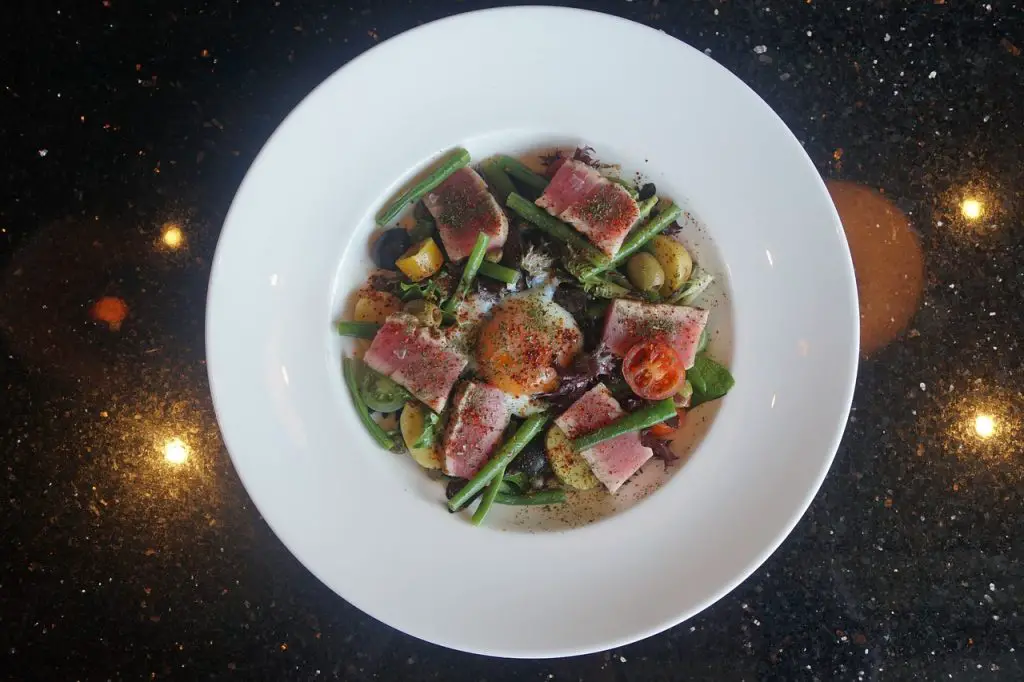Beef Wellington is a classic British dish known for its decadence and sophistication. This culinary masterpiece features a succulent beef tenderloin encased in a layer of duxelles (mushroom mixture) and wrapped in puff pastry. The key to a perfect Beef Wellington lies not only in the preparation but also in the choice of the beef cut. In this article, we will delve into the world of beef cuts and determine which one is the best fit for creating an unforgettable Beef Wellington.
The Essence of Beef Wellington:
Before we dive into the specific beef cuts, let’s briefly explore what makes Beef Wellington such a beloved dish. This elegant entrée combines various textures and flavors, with the beef being the star of the show. A perfectly cooked beef tenderloin should be tender, juicy, and full of flavor.
The Classic Choice: Beef Tenderloin:
Beef tenderloin, often referred to as filet mignon, is the traditional and most commonly used cut for Beef Wellington. Its tenderness is unparalleled, and it provides a luxurious melt-in-your-mouth experience. However, this cut can be relatively expensive, and some argue that it lacks the depth of flavor found in other cuts.
The Flavorful Alternative: Ribeye:
Ribeye, with its marbling and rich, beefy taste, is a favorite among steak enthusiasts. While it may not be as tender as the tenderloin, it compensates with its exceptional flavor profile. Choosing ribeye for your Beef Wellington will result in a more robust and savory dish.
The Budget-Friendly Option: Sirloin:
For those looking to enjoy the indulgence of Beef Wellington without breaking the bank, sirloin is a viable choice. It is more affordable than tenderloin or ribeye and offers a good balance between tenderness and flavor. However, it may require some extra care in preparation to ensure optimal results.
The Unconventional Approach: New York Strip:
The New York strip, known for its firm texture and intense beefy taste, provides an interesting twist to the traditional Beef Wellington. While it might not be the most tender option, its bold flavor can create a unique and memorable dish.
The Versatile Choice: Chateaubriand:
Chateaubriand is essentially a thick center-cut tenderloin steak. It offers the tenderness of the tenderloin but in a larger portion, making it ideal for serving multiple guests. It strikes a balance between tenderness and flavor, making it a versatile choice for Beef Wellington.
The Wagyu Experience:
For those who seek the epitome of luxury, using Wagyu beef for Beef Wellington can elevate the dish to new heights. Wagyu beef is renowned for its intense marbling and unmatched tenderness. However, it comes with a hefty price tag, reserved for special occasions.
Considerations for Cooking:
Regardless of the beef cut chosen, the cooking process plays a vital role in achieving the perfect Beef Wellington. Techniques such as searing the beef, ensuring the duxelles is well-seasoned, and achieving the right pastry crust are crucial steps in the preparation.
Pairing with Wine:
To complement the richness of Beef Wellington, selecting the right wine is essential. Red wines like Cabernet Sauvignon, Merlot, or Pinot Noir are excellent choices to enhance the overall dining experience.
In the world of culinary delights, the choice of beef cut for Beef Wellington ultimately comes down to personal preferences and budget considerations. Each cut brings its unique qualities to the table, be it the tenderness of the tenderloin, the flavor of ribeye, or the affordability of sirloin. Experimentation with different cuts can lead to delightful variations of this timeless dish. So, whether you opt for tradition or venture into uncharted territory, one thing is certain – a perfectly cooked Beef Wellington is a masterpiece that will leave your taste buds dancing with delight.
Tips for Success:
Achieving the perfect Beef Wellington can be a culinary challenge, but with the right approach, anyone can create a memorable dish. Here are some additional tips to ensure your Beef Wellington turns out exceptional:
Temperature Control: Use a meat thermometer to monitor the internal temperature of the beef. For a medium-rare result, aim for 130°F (54°C). This will help you avoid overcooking the meat.
Resting Time: Allow the cooked Beef Wellington to rest for at least 10-15 minutes before slicing. This ensures that the juices redistribute evenly throughout the meat, keeping it moist.
Puff Pastry: When working with puff pastry, it’s important to keep it cold. Roll it out on a lightly floured surface, and ensure there are no cracks or tears that can lead to leaks during baking.
Seal the Edges: Properly sealing the pastry is crucial to prevent the duxelles from spilling out and to maintain the pastry’s crispness. Use beaten egg wash to seal the edges securely.
Creative Variations: Don’t be afraid to experiment with different ingredients in your duxelles, such as adding herbs, garlic, or even truffles for an extra layer of flavor.
Serving and Presentation:
The presentation of your Beef Wellington can be as important as its taste. Consider these presentation tips:
Slice the Wellington into thick, elegant portions to showcase the perfectly cooked beef.
Serve with a drizzle of sauce made from reduced beef stock, red wine, and shallots for added richness.
Garnish with fresh herbs, such as parsley or chives, to add a pop of color and freshness to the plate.
Pair the Beef Wellington with complementary side dishes, such as roasted vegetables or creamy mashed potatoes.
Dietary Considerations:
Beef Wellington is a classic dish, but it may not be suitable for all dietary preferences. For those looking for alternatives, vegetarian and vegan versions using ingredients like portobello mushrooms or tofu can provide a similar culinary experience.
Beef Wellington, with its rich history and exquisite taste, is a dish that continues to captivate food lovers around the world. The choice of beef cut plays a significant role in shaping the character of this iconic dish. Whether you opt for the tender, luxurious tenderloin, the flavorful ribeye, or any other cut, your Beef Wellington journey is bound to be a culinary adventure filled with flavor and satisfaction. Remember, the key to a perfect Beef Wellington lies not only in the cut but also in the skill and passion you bring to its creation. So, roll up your sleeves, embark on this culinary quest, and savor the rewards of a beautifully crafted Beef Wellington that will leave your guests in awe.




